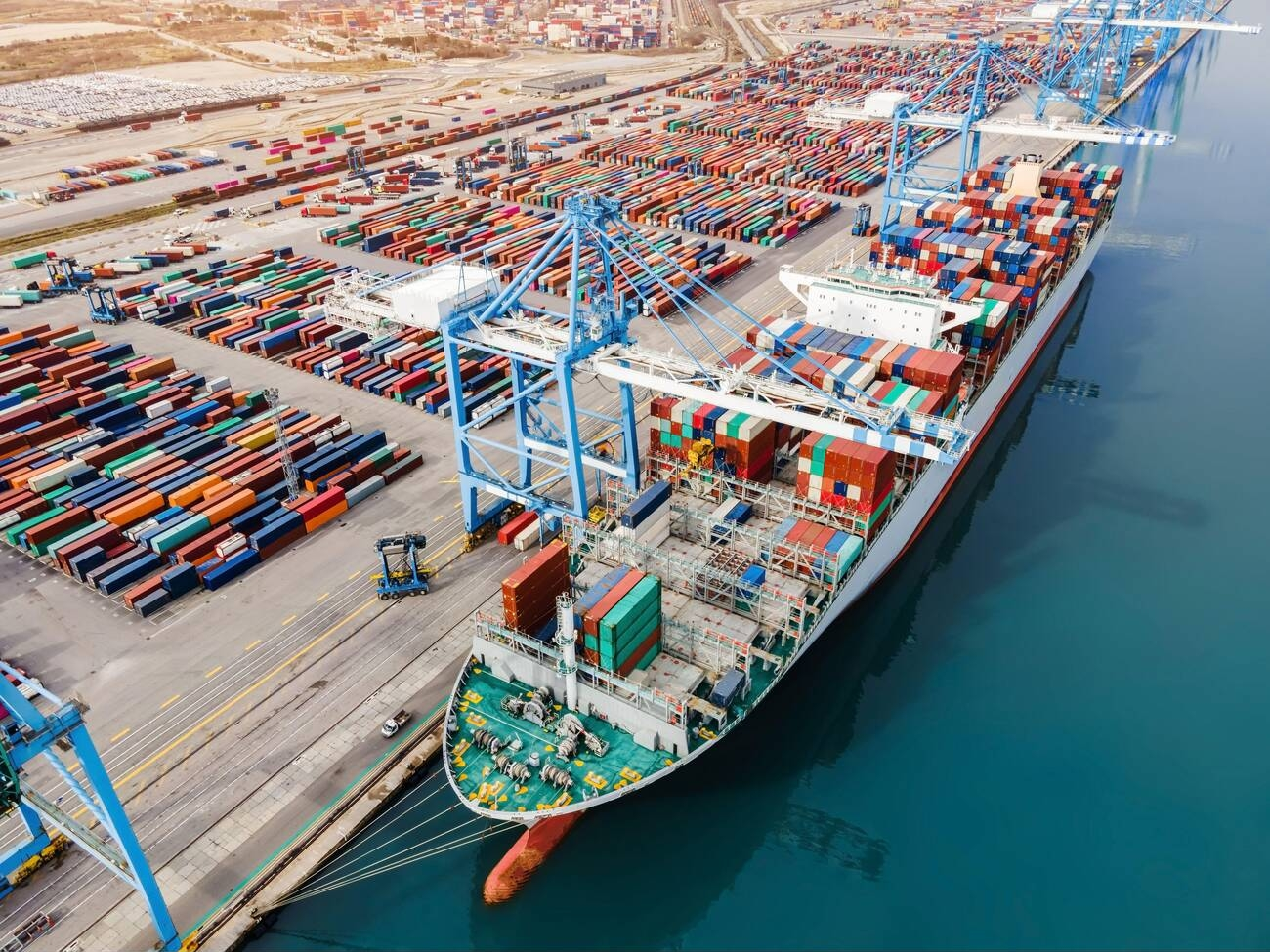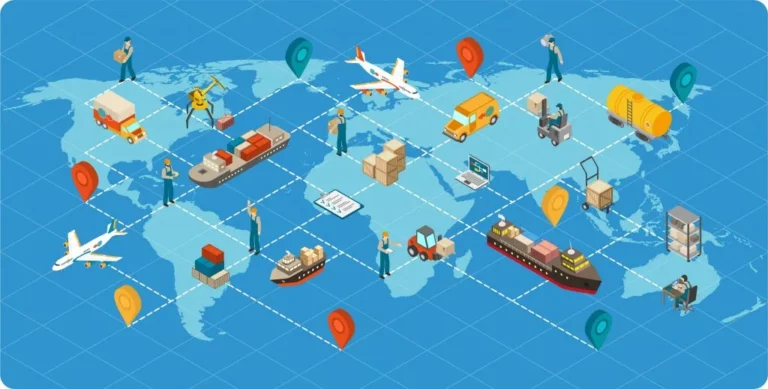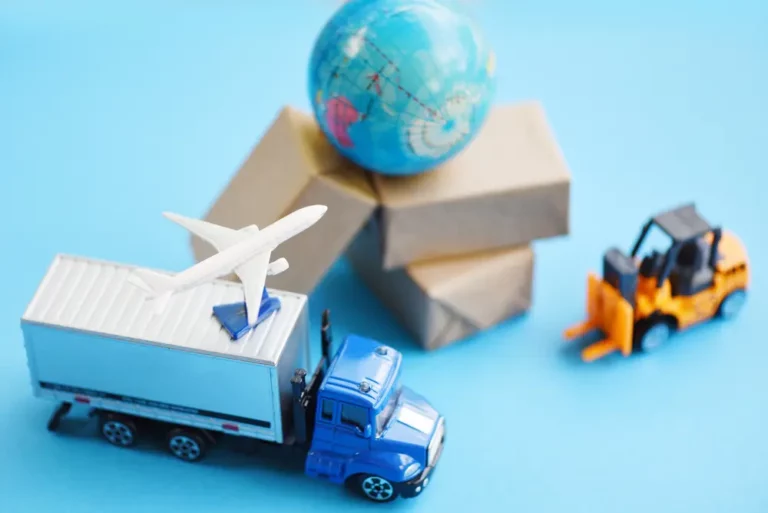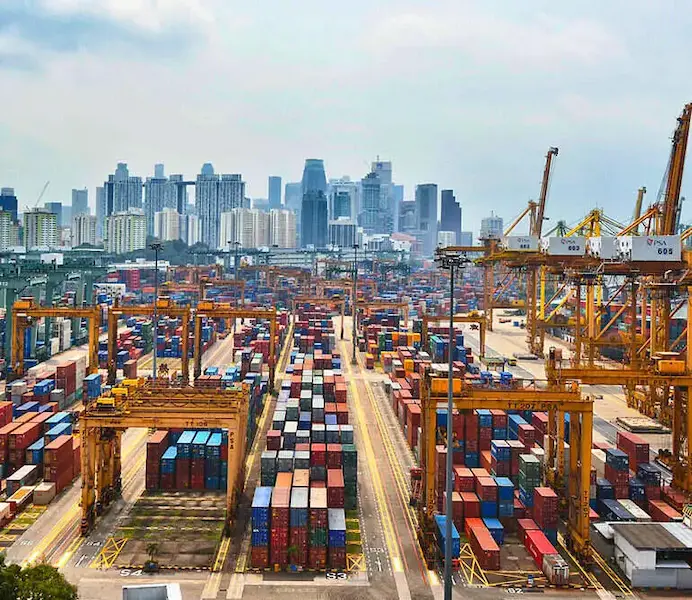Mastering the Logistics of Hawaii to Michigan Shipping
For businesses and individuals alike, shipping goods from the sun-kissed shores of Hawaii to the bustling mainland of Michigan can feel anything but ideal. Although it may appear difficult at first, Hawaii to Michigan shipping may be accomplished with the appropriate preparation and understanding.
To help you navigate better, we’ll be discussing a number of factors that affect shipping choices, like the kind of items being shipped and the best delivery options. In order to guarantee compliance and a seamless customs clearance process, we’ll also assess the regulatory environment, taking into account both mainland and island-specific needs.
We’ll also look at best practices and cost-cutting tactics to maximise shipping costs and keep a healthy profit margin. Businesses and individuals can overcome the challenges of sending goods from Hawaii to Michigan by using this information to streamline their shipping processes. Keep checking back for insightful analysis and useful advice in our next blogs.
Understanding Shipping Routes and Options from Hawaii to Michigan
While Michigan lies in the Great Lakes region of the Upper Midwestern United States with great connectivity, Hawaii is a collection of islands in the Pacific Ocean excluded from the world. Hawaii is not part of the continental United States, so shipping from or to this state has its own unique challenges. This leads to further challenges in freight shipping because shipping is limited to air or water.
Air Freight Options
Air freight becomes the best option when freshness and punctuality are of the essence. Imagine your pineapples arriving in Michigan with their delicious tropical flavour still intact, all thanks to the quick delivery made possible by air travel. When it comes to time-sensitive products like flowers or seafood, air freight is invaluable because of its exceptional capacity to deliver goods in a matter of days.
It also has enhanced security features, guaranteeing the security of valuables during transit. That being said, it is quite expensive, frequently tenfold or more more expensive than ocean freight. Strict weight and size restrictions also apply to air freight, which could limit the scope of some shipments.
Ocean Freight Routes
Ocean freight continues to be the mainstay of international trade for shipments that are larger and less time-sensitive. Hawaii to Michigan shipping, there are two main routes to take into account: the Transpacific Route and the Panama Canal Route.
The Transpacific Route spans the wide Pacific Ocean and takes two to three weeks to arrive at its destination. Although this path is less expensive, it is not as flexible as other possibilities. On the other hand, the Panama Canal Route, although longer with a transit time of 3-4 weeks, provides access to a broader range of U.S. ports, affording greater flexibility in selecting your final destination. Major U.S. container ports such as Long Beach, Los Angeles, and Savannah play pivotal roles in the logistics landscape, offering state-of-the-art infrastructure and unparalleled connectivity to facilitate the smooth flow of goods.
Integrated Shipping Solutions
Sometimes the best way to ship is to combine land, sea, and air transportation in a clever way. A flexible method, multimodal shipping is especially useful for shipments that include both heavier and time-sensitive commodities. The advantages of each method of transportation can be used to tailor your logistics plan in order to save expenses and increase productivity. For example, in the case of Hawaii to Michigan shipping, urgent cargo can be flown immediately to Michigan via air freight, whilst less urgent cargo can be shipped by sea and eventually meet up with their airborne counterparts to finish the route without any problems.
Navigating Interstate Shipping Regulations and Customs
As we continue with our Hawaii to Michigan shipping journey and come across the occasionally difficult-to-navigate regulatory waterways and customs procedures. Even while these intricacies might appear overwhelming, you can confidently overcome them if you have clear knowledge and are prepared.
Compliance with Interstate Shipping Laws
Interstate transportation requires adherence to a number of legal requirements, as each state has its own set of rules defining acceptable commodities, weight restrictions, and safety requirements. To guarantee a comfortable trip:
Register your business: It can be required of you to register with the regulatory body in your state, depending on the size of your business and the kind of commodities you transport.
Obtain necessary permits: Certain goods, such as hazardous materials or agricultural products, require specific permits for interstate transport. It’s essential to research and acquire any required permits in advance.
Understand weight limits: States enforce vehicle weight restrictions, and exceeding them can result in significant fines. It’s crucial to accurately calculate your shipment weight and comply with all regulations.
Stay updated on tax laws: Sales tax regulations vary between states, so it’s important to familiarise yourself with the tax laws of the destination state to avoid unexpected charges.
Understanding Customs Processes
Since Hawaii is an island, there are extra factors to take into account when processing customs, especially since products from Hawaii are regarded as imports when they arrive in Michigan. To provide a seamless procedure for customs clearance:
Declare each item truthfully: Give a thorough and accurate description of your products, taking into account their quantity, value, and planned purpose. This is because providing false information can cause delays and fines.
Get the required paperwork ready: Certain documentation, like bills of lading, origin certificates, and commercial invoices, could be needed by customs. It is imperative that you make sure you have all the necessary documentation ready.
Recognise the effects of taxes and duties: Customs charges and federal taxes may apply to your items, depending on their value and nature. It is advisable to investigate and account for these expenses in your shipping budget.
Think of employing a customs broker: Hiring a certified customs broker might be helpful for complicated cargo or uncharted territory. Their knowledge can guarantee compliance with customs regulations and save time.
Estimating Shipping Times and Costs
A sensible method is needed to navigate the challenges of forecasting shipping times and prices for Hawaii to Michigan shipping. Let’s examine the variables affecting the costs and transportation times for your shipments.
Factors Affecting Transit Times
Understanding the variables affecting shipping speed is essential in order to be further able to understand and estimate the shipping time and costs.
Select Shipping Method: Air freight delivers cargo faster than sea freight, taking days to arrive instead of weeks or even months. Even more time can be saved by choosing expedited air services, although at a cost.
Selected Route: The Transpacific route provides a quicker but more direct path. Although it takes longer, the Panama Canal route offers access to additional U.S. ports, which could affect the timing of final deliveries.
Weather-related and other delays: Any voyage can experience unplanned delays due to unforeseen storms, mechanical problems, or hold-ups at customs. In order to lessen the influence of these variables, include buffers.
Final Delivery Method: Final delivery by train or truck may take additional time once your package arrives on the mainland. If speed matters to you, think about accelerated solutions.
Cost Considerations in Different Shipping Modes
Every shipping method has different expenses to take into account.
Air Freight: Air freight is without a doubt the speed demon, but it costs a lot. Anticipate prices that are often determined on weight and urgency, and multiple times greater than ocean freight.
Ocean Freight: The most affordable option is ocean freight, but be prepared for lengthier transit times. Usually, costs are determined by the size of the container and the port of destination; extra charges may apply for refrigeration or special handling.
Multimodal Shipping: Combining the sea and air legs of a shipment allows for greater flexibility, but it also adds a layer of complication and may result in higher costs. Carefully balance the benefits vs the additional cost.
Recall that sometimes the best solution isn’t the cheapest one. When making your decision, take into account the urgency, value, and expectations of your customers regarding your goods. Make use of internet quote resources to evaluate costs from different carriers to find the sweet spot between speed and affordability.
Strategic Planning for Efficient Hawaii to Michigan Shipping
Preparing for efficient shipping from Hawaii to Michigan requires strategic planning and practical tools. Let’s equip you with the necessary strategies and technologies for a smooth journey.
Optimising Logistics for Timely Deliveries
In order to streamline logistics and ensure timely deliveries without disruptions the following strategies can be followed:.
Forecast Demand: Accurate demand forecasting enables proactive planning, allowing you to secure shipping capacity in advance. This can help guarantee space availability on preferred routes and potentially access early booking discounts. By avoiding last-minute rushes, you ensure timely deliveries without incurring extra costs.
Consolidate Shipments: Consider combining smaller shipments into larger ones whenever possible. This can lead to cost reductions through economies of scale. Bundling items from different suppliers or coordinating shipments to Michigan with other businesses can help increase volumes, allowing for better negotiation of rates with carriers and streamlining logistics processes.
Explore Multimodal Options: For time-sensitive shipments, a multimodal approach can be beneficial. This may involve combining air and sea freight for efficiency. Utilising air freight for the initial leg of the journey followed by sea freight for the final stretch can balance speed and affordability. Multimodal options offer flexibility to meet specific shipment requirements while managing costs effectively.
Partner with Reliable Carriers: Not all carriers offer the same level of service. For Hawaii to Michigan shipping, it’s essential to partner with a reputable company. Conduct thorough research to identify carriers with experience in this specific route, a track record of reliability, and positive customer feedback. Collaborating with a dependable carrier ensures smooth operations, with clear communication and proactive problem-solving. By choosing the right partner, you can achieve secure and stress-free shipments.
Be Proactive with Documentation: Arrange the required paperwork well in advance to prevent last-minute delays at the border or during inspections.
Leveraging Technology for Tracking and Management
In today’s digital age, technology is your loyal first mate, providing invaluable tools for tracking and managing your shipments. By leveraging technology, you can gain control and transparency, ensuring precise and efficient navigation of your shipments.
Real-time Tracking: Make use of tools that provide you with up-to-date information on the whereabouts of your shipment, enabling you to take preventative measures against any possible problems.
Streamline your supply chain and gain real-time control with GoComet’s free container tracking tool. Track all your shipments, across any carrier, in one centralized dashboard.
Transportation Management Systems (TMS): TMS is your one-stop shop for efficiency. Automate paperwork, compare carrier rates, optimise routes, and streamline communication, giving you time and resources to focus on strategic planning.
Customs Clearance Software: Simplify the often-complex process of navigating customs. Electronically submit accurate declarations, track clearance status, and reduce delays and penalties, ensuring smoother border crossings.
Data Analytics: Turn historical data into valuable insights. Identify trends, optimise strategies, and maximise efficiency by analysing past performance and forecasting future demand. Make data-driven decisions for continuous improvement.
Future Trends in Interstate Shipping and Implications
As we come to a conclusion of our trip from Hawaii to Michigan, let’s look ahead and see what new developments are reshaping the interstate transportation industry. These developments, which range from rising emphasis on sustainability to technological breakthroughs, will have a huge impact on how items are transported over long distances.
Technological Advancements and Their Impact
Automation and AI: Port terminals are increasingly embracing automation, with robots and intelligent machines taking over various tasks previously handled by humans. Automated cranes, container terminals, and self-driving trucks are becoming commonplace, revolutionising port operations with improved efficiency. Automation minimises human error, ensuring precise and consistent performance, leading to increased throughput, quicker turnaround times, and enhanced productivity throughout the shipping ecosystem.
Blockchain and Data Sharing: In the complex shipping industry, trust and transparency are crucial for effective collaboration among stakeholders. Blockchain technology provides a secure and decentralised ledger system, enabling real-time cargo tracking, secure document sharing, and automated payments. This enhances transparency, reduces disputes, and improves efficiency by facilitating seamless information exchange between ports, shipping lines, and logistics providers.
Big Data and Predictive Analytics: The maritime sector generates vast amounts of data, ranging from ship and port operations to cargo and weather patterns. By leveraging AI and machine learning algorithms, this data can be utilised for predictive analytics, enabling intelligent decision-making. Predicting weather patterns to optimise routes for fuel efficiency and anticipating maintenance needs to minimise downtime are examples of how big data analytics can enhance shipping operations, making them more efficient and data-driven.
Sustainability in Shipping
The shipping industry, responsible for 3% of the world’s total greenhouse gas emissions, has seen a 20% increase in emissions over the past decade. In response, the industry has been continuously implementing environmental practices to improve its impact. These changes include:
Alternative Fuels: LNG is a particularly environmentally friendly option because it can cut CO2 emissions by up to 25%. Still, questions remain regarding methane leakage and its effects on the entire lifetime. Renewable and biodegradable biofuels have a lot of exciting promise. Advanced biofuels offer even more decarbonisation than advanced biodiesel and bioethanol, which are already causing waves. Increasing output and maintaining sustainability over the course of the biofuel life cycle present challenges. Future clean fuel hydrogen has great potential for shipping with no emissions, but widespread use will require improvements in manufacturing, storage, and onboard use.
Energy Efficiency: A apparently straightforward method that produces remarkable effects is slow steaming. A 10% speed reduction can cut pollutants and fuel consumption in half, with negligible effects on delivery times. Air lubrication and energy-saving coatings combined with innovative hull designs lower drag and increase fuel economy. Fuel savings are mostly attributed to digital technologies like artificial intelligence (AI) and machine learning, which further improve engine optimisation, route planning, and weather routing.
Sustainable Ports and Infrastructure: Shore power connections are revolutionary. Auxiliary engine emissions disappear when a ship plugs into shoreside electricity at berth, greatly lowering air pollution in port communities. By incorporating renewable energy sources like wind turbines and solar panels into port operations, clean energy consumption is encouraged and dependency on fossil fuels is reduced. Effective facilities for the collection, recycling, and treatment of garbage reduce environmental impact and encourage proper waste management in ports.
While there are still issues with cost and scalability, the industry can innovate and work together more because of the emphasis on sustainability.
Interstate shipping’s future can be seen in these developments. Businesses will need to embrace them and comprehend their ramifications in order to remain both environmentally conscious and competitive. By remaining informed, adaptable, and committed to continuous improvement, we can navigate towards a future of more efficient, sustainable, and prosperous interstate shipping.





